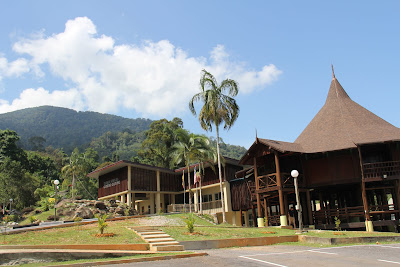 Dabai resembles a black olive. In fact, we call it "olive".
Dabai resembles a black olive. In fact, we call it "olive".It has a creamy yellow flesh. The texture is similar to that of avocado.
It is seasonal, usually around together with durians. The best dabai come from the Rejang basin of Kapit and Sibu.
The kernels of the dabai seed can also be eaten. It's nutty.
Cook the dabai by soaking it in warm water (you should be able to put your hand in it without scalding yourself) for about 20 minutes. Make sure you have enough water to cover all the dabai.
When it is cooked, the dabai should be soft and the flesh should come away from the large seed inside easily.
Toss some salt on the dabai and it is ready to be eaten.
I like my dabai with soya sauce and sugar!
My grandmother used to separate the flesh from the seeds of cooked dabai, mashed the flesh and added salt to taste. The dabai is bottled and stored in the fridge. The beautiful purple hue (the yellow flesh is stained by the skin) goes well with porridge and rice



























